Tesla: The Past, Present, and Future of Energy and Transportation
Posted by Written by Michaela Jackson on 7th Apr 2022
One of the greatest concerns of our generation is the future of our environment. A huge part of ensuring the healthiest future for humanity and the Earth is investing resources into renewable energies. A company that has made huge strides into developing ground-breaking technology in this arena is Tesla, a household name usually associated with luxury electric vehicles (EVs). However, Tesla has become much more than just another car manufacturer. Under the leadership of CEO and product architect Elon Musk, Tesla has become a pioneer in not only the production of electric cars, but also many other types of technologies that are meant to move the world towards eliminating fossil-fuel as our main source of energy.
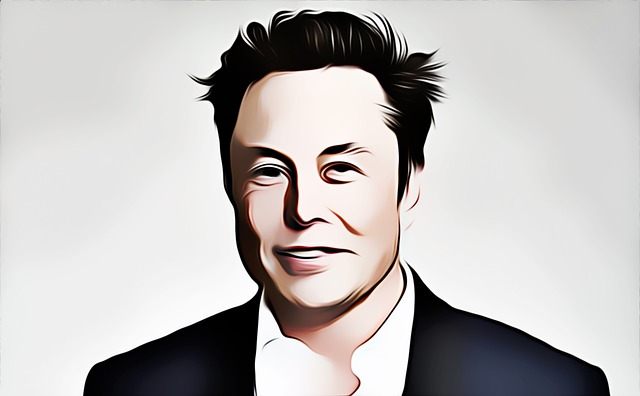
In order to understand the potential impact Tesla’s transformative technologies on the modern world, one must first understand where Tesla came from and the impact it has already had in just the 19 years it has been in business. One must also take into account Tesla’s goals, motivations, and how the company has adapted over the years to become not just a top-selling electric vehicle manufacturer, but also a major player in the development and widespread distribution of green energy tech.
Tesla’s History of Innovation:
Tesla is venturing to change the direction of global energy as we know it, and has been since its 2003 inception. Originally, what is now Tesla Inc. was at one time simply called Tesla Motors, and was founded by two silicon valley engineers: Martin Eberhard, who became Tesla’s first CEO, and Marc Tarpenning, who became CFO. Other co-founders included former CTO JB Straubel, Ian Wright, an engineer for the company who no longer owns any Tesla stock now that Tesla stock seems to be hitting its prime (Tesla shares skyrocketing by roughly 340% in 2020, then the company becoming the first carmaker to hit a $1 trillion valuation in October of 2021), and of course the infamous Elon Musk, who was Tesla’s earliest investor and is now crowned as Tesla’s CEO, the face of the Tesla brand, and the richest man on Earth as of February 2022, with a net worth of $223 billion (source). Musk is now the only original founding member left in a position of influence within Tesla.
At its inception, Tesla’s main focus was on the production of electric vehicles that are comparable in performance to gasoline-driven cars, but more fun to drive and better for the environment. However, founders Eberhard and Tarpenning weren’t just looking to develop any EV - they wanted to create a comparable electric sports car that could compete against the sports cars we are used to seeing race around the tracks without creating the carbon emissions that those same cars do. After years and years of hard work, product development, and research Tesla Motors brought its first EV model to the world market in 2008 - the fully electric Roadster. In both design and utility, the Roadster offered an environmentally-friendly alternative to the traditional gasoline sports car. Thanks to the revolutionary car’s lithium-ion cell battery, it not only produced no tailpipe emissions but also could be recharged using a standard outlet (source). However, due to its high-end starting price at $109,000, it was inaccessible to the majority of the car-buying market and classed as a “luxury” vehicle.
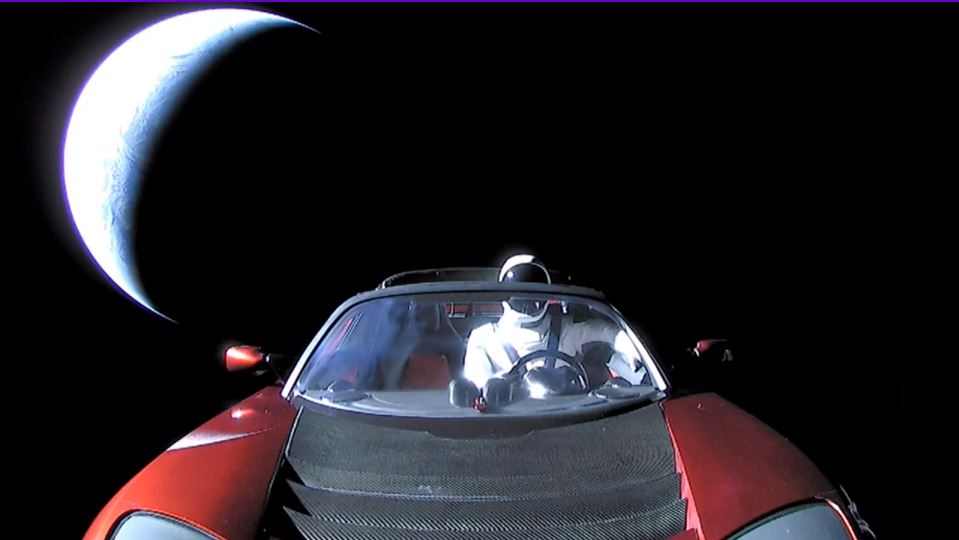
Despite its first car being in the high-end price range, Musk had already revealed in a blog post on Tesla’s website from August 2006 titled “The Secret Tesla Motors Master Plan (just between you and me)” that Tesla’s goals were not to become the next luxury-only car brand - they had much bigger ambitions. Musk made it clear that the ultimate goal for Tesla was not in becoming car brand royalty… instead, it was to “help expedite the move from a mine-and-burn hydrocarbon economy towards a solar electric economy”. In fact, Musk said that overarching goal was the reason he funded the company with some of the $180 million he reaped from co-founding and selling Paypal, the massively successful internet payment service, to eBay - of which, his investment in Tesla has been quoted as about $70 million (source).
Following the success of the Roadster, which sold a total of 2,450 units from its release in 2008 to its wrap-up in 2012 (source), came the Model S, which was unveiled in 2009 but was unable to begin production until 2012 due to major hurdles spawned by the 2008 financial crisis. Between the time when the plans for the Model S were introduced to the public and when the first cars of its kind began to finally hit the streets, many important parts of Tesla had changed. Elon Musk had stepped into the position of CEO, and Tesla had to seek financial help via convertible debt financing, which they secured in late 2008 (source). A 10% stake in Tesla was sold to the car company Daimler in the interest of using their combined forces to continue to develop electric smartcars, as they already had a working relationship in that realm together (source). Even the Department of Energy stepped in to loan Tesla a whopping $465 million in 2009, and in 2010 Tesla went public at $17/share, raising a total of $226.1 million for their cause (source).
When the Model S sedan was officially released in 2012, it changed the EV game. According to Consumer Reports, the Model S became “the best car ever tested” after receiving a 99 out of 100 and “ranking best in class in every category for electric sedans” (source). The Model S became Tesla’s signature model with its huge success, breaking sales records in both 2014, with 2,500 units sold in a month, and in Q1 of 2015, where sales reached 10,030 units (source).

But what was it about the Model S that made it so game-breakingly popular? What about this car made it such an instant hit that it launched Tesla into the big-name automaker space as a rare independent car manufacturer success? Although the Model S was still in the “luxury” category, with a price starting at $89,490, it was the first ever premium all-electric sedan (source) and effortlessly dominated every category in which it was tested - safety, performance, and efficiency being the most important. While doing this, the Model S also sported a sleek, attractive, even futuristic look, which matched the futuristic components of its ambitious design (over-the-air software updates, 0-60 MPH acceleration time of 2.28 seconds, and three different long-range battery options which all carried the battery system beneath the floor of the car to improve handling). Knowing the innovations it brought to the table, it is easy to see why the Model S quickly became a staple in the electric cars market.
Shortly after the Model S officially hit the streets, Tesla was ready to reveal to the public yet another new model. In February of 2012, a prototype of the uniquely designed Model X was unveiled. The first Tesla car to feature what is now the company’s signature, futuristic Falcon Wing doors, the Model X almost instantly became a major hit with the masses. Between the night reservations for the Model X opened up on February 9th, to a few days later on February 14th, Tesla had amassed advance sales of more than $40 million and traffic on TeslaMotors.com had increased 2,800% (source). However, the Model X didn’t actually enter production until the end of 2015, a year after the originally intended production start date in 2014, thanks to production complications caused by the incredibly advanced and ambitious features of the car itself (chiefly the falcon wing doors and the “bioweapon defense mode air-filtration system) making it difficult to mass-produce (source).
2014 became a very big and busy year for Tesla. The company made a big step towards their ultimate goal of creating a sustainable automotive future by opening up their patents for the creation of their electric cars in 2014 for public use. In making their precious design patents open-source, they invited anyone and everyone to participate in the furthering of the world’s transportation future as we know it, so that accessibility to affordable EVs can become a reality. Also in 2014, Nevada was chosen by Tesla as the location for their first “Gigafactory” - a gigantic factory that would localize production of the special batteries and electric motors used in Tesla products, offering the company greater control over the actual manufacturing process and sustainably scaling it.
The final large announcement Tesla made in 2014 was in October of that year: all Tesla electric cars produced from 2014 and onward were installed with Autopilot hardware (source). This hardware would not be officially put into use until the 7.0 software update released in October of 2015, nearly a year later. This update allowed Tesla vehicles with the proper hardware to operate themselves while driving (in certain conditions). The 7.0 update was followed up in 2016 with the 7.1 update, enabling even more autonomous features, including self-parking (source). These Autopilot features would go on to become a huge selling point for Tesla cars - but such revolutionary technologies always come with risk and uncertainty as they rollout into the marketplace.
Also in 2016, the prototype of the Model 3 was revealed. As Tesla’s first mass-market car, the company planned to launch at a $35,000 price point, meaning the Model 3 would be the most affordable and accessible EV from Tesla yet (source). This model was designed to meet the increasing demand for more inexpensive Teslas. At launch in 2017, the Model 3 quickly and easily became not only Tesla’s best-seller, but also the best-selling electric car of all time, surpassing even the Nissan Leaf (source). The Model 3 featured a luxury feel, with luxury technology, for half the price. As a 4-door sedan, with an all-glass roof, 15-inch central touchscreen, and a larger battery range than previous models, it is very easy to imagine why such a car would become such a success (source).
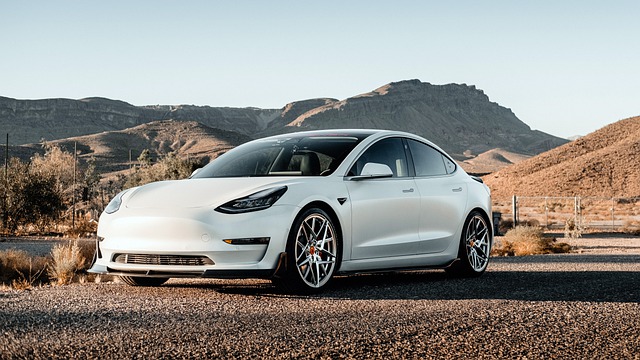
2016, another eventful year for Tesla, also involved several other changes for the growing company. In May of 2016, the first fatal autopilot accident occurred, involving a Model S. Afterwards an investigation was launched by government regulators, searching for a link between the unfortunate accident and Tesla’s semi-autonomous autopilot that was on during the time. Eventually, Tesla’s autopilot was cleared from fault in 2017, when the federal government ended its investigation, having found no defect with the system (source). However, this wasn’t the last time Tesla would be investigated for their autopilot system being engaged at the time of an accident.
In June of 2016, it was announced to the public that Tesla would potentially be buying out the company SolarCity (which, controversially, was owned by Tesla CEO Musk’s cousin). SolarCity was a solar installation company - and while Tesla’s supposed motivation for taking on the tanking business was to continue furthering their own involvement in the sustainable energy market, many saw the deal as a “bailout” due to Musk’s relation to SolarCity’s CEO. Regardless, the deal was closed in November of that year after Tesla shareholders voted in favor of the merger, thus propelling Tesla into solar business (source).
Another event for Tesla from 2016 was the buying of a German engineering company called Grohmann Engineering. The purpose of Tesla acquiring this company was to be able to - as Musk put it - “build the machine that makes the machine” (source). Grohmann Engineering specialized in designing manufacturing automation systems, which greatly interested Musk, who wanted to be able to eventually automate most, if not all, of the car-making process. Doing so would make production on a massive scale cheaper and quicker, but is an incredibly ambitious goal and one that is very difficult to achieve.
In 2017, Tesla officially made the change from Tesla Motors and teslamotors.com, to Tesla Inc. and tesla.com, in order to show the world that they were no longer merely a car manufacturer. This change developed after the 2016 merger with SolarCity, and Musk released a “Part Deux'' to the Tesla Master Plan in July of that year to explain some of the new pursuits the company was taking on. The new goals were divided into four main parts, all of which centered around not only focusing on creating more affordable electric vehicles for the masses, but also to dedicate resources to creating attractive and efficient solar roof panels that would integrate with Tesla’s existing battery technology, improving their self-driving tech to be safer than manual driving, and creating a car-sharing program to make owning a Tesla more affordable by allowing it to be easily loaned out by individual car owners, essentially making the Tesla pay for itself and then some. To this day, these goals are still relevant to Tesla’s overarching mission to make sustainable energy resources affordable and commonplace.
In November of 2017, Tesla unveiled a new and novel idea that captivated both Tesla fans and critics alike - the Tesla Semi Truck concept. The thought of electric semi trucks was never a hot topic before Tesla’s concept came out, even in the EV world. The main focus has always been on making the common car electric first, for a multitude of reasons, before turning to other types of vehicles. However, the concept Tesla revealed for their model of electric semi truck had lots of appeal, especially to those working with or managing their own semi fleets already. The electric semi would have classic self-driving capabilities that are signature for Tesla products, but also feature a center-mounted seat for the driver, and the promised battery range is an astounding 500 miles, with a 400 mile range after just half an hour of charging (source). Alongside the electric semi truck, Tesla also unveiled their ideas for a new and improved version of their original fully-electric sports car creation, the Roadster, which would feature a higher price point but impressive acceleration speeds.

In March of 2018, another unfortunate accident occurred involving a Model X, which had autopilot engaged at the time of the collision of the car into the highway barrier, and was fatal for the driver. According to Tesla’s investigation into the matter, the driver was given several warnings by the car, both visual and audible, but the system did not detect the driver’s hands on the steering wheel a few seconds prior to the crash (source). A separate investigation performed by the National Transportation Safety board found that both Tesla’s autopilot system, and the driver’s inattentiveness could be possible factors in the fatal wreck.
In 2019, Tesla started off the year by opening its Shanghai Gigafactory in China, becoming the “first western automaker to own a factory in China without a joint venture” (source). Tesla’s ambitions remained high with the unveiling of the Model Y, with two versions to be released in 2020 and in 2021 respectively. The first would be a seven-seater priced at $47,000 with a range of 300 miles and the other “standard-range” version would be priced at $39,000 with a lesser range of 230 miles (source).
However, Tesla was still not done with their 2019 unveilings. In November they introduced the Cybertruck concept, which became a bit more controversial than Tesla’s previous ideas. Many found its look to be jarringly too sci-fi, and the infamous demonstration, provided at the Cybertruck’s unveiling, of the strength of the “armored” glass in the windows, left much to be desired. However, Tesla still made huge promises on the Cybertruck’s functionality, which would feature a tri-motor all-wheel-drive version with a 500 mile range and an estimated 14,000 pounds of towing capacity (source).
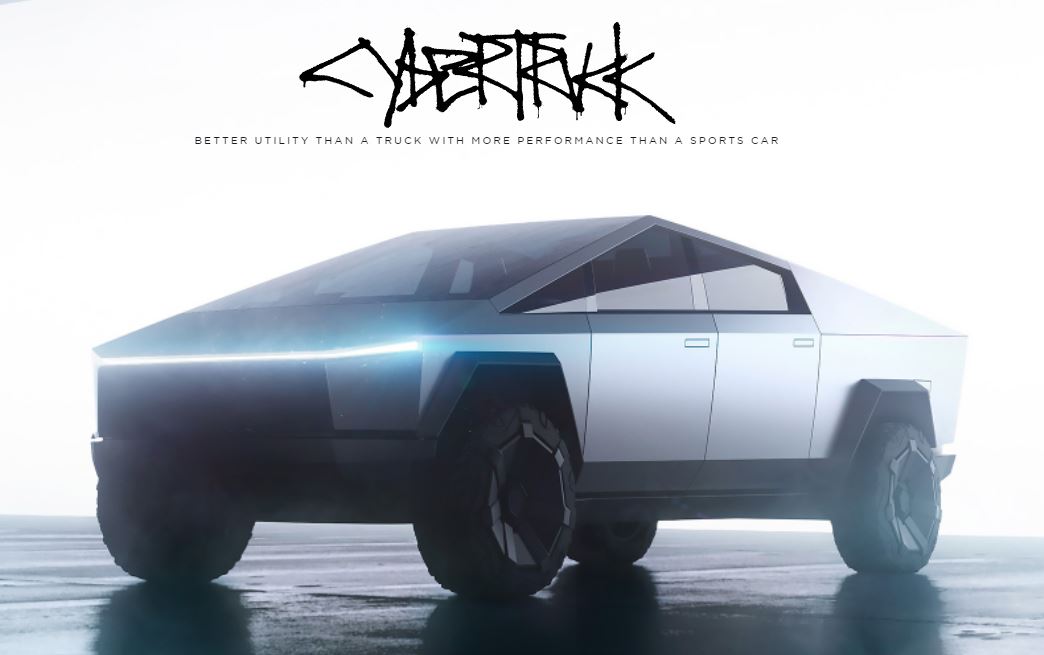
After some troubles with restrictions on the Nevada Gigafactory during the start of the unprecedented COVID-19 pandemic, and some controversial and market-swaying tweets by Elon Musk, 2020 ended up being a rough year for Tesla, and for their employees in particular. However, the Model S achieved becoming the first EV to get a 400-mile range rated by the EPA by maximizing on regenerative braking and slimming down the weight of the car itself (source). Also, Tesla became the dominating player in China’s EV market, selling over 50,000 cars in the first six months of 2020 (source).
Tesla started out 2021 by almost hitting their goal of delivering 500,000 cars in 2020. Although they technically delivered 499,500 cars, many still considered the endeavor a success when taking into account setbacks from the pandemic (source). In keeping with the times, Tesla also began accepting bitcoin as a form of payment for one of their cars in March of 2021. Under the Biden presidency, a $2 trillion plan was put forth to upgrade the United States’ infrastructure, which would help shift the transportation industry towards electric vehicles as a long-term solution to reducing American carbon emissions (source). This plan included government assistance in making EVs more affordable and accessible to citizens of all incomes in the form of tax incentives and rebates.
As the world navigates 2022, hopefully on the tail-end of the pandemic, Tesla has made it clear that they will not give up no matter what hurdles are thrown in their way. As a company, Tesla has made gigantic strides towards pushing the transportation market into the future, and will continue to do so with both transportation and general energy… but what does that entail, exactly?
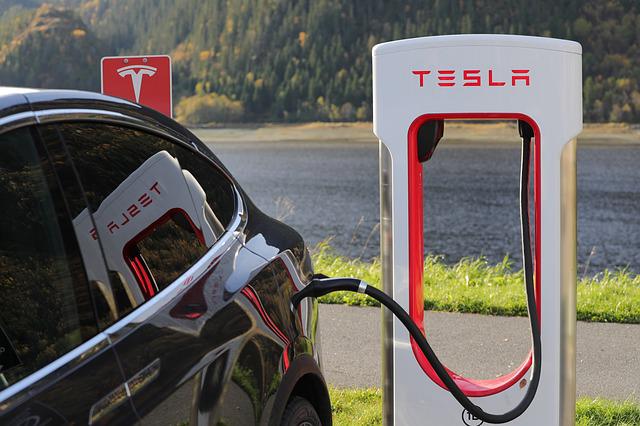
Tesla’s Mission and the Future:
From its birth in 2003, nearly 20 years ago, Tesla would go on to develop and perfect a process of producing progressively less expensive cars to make saving the environment an easily accessible option for all people regardless of financial status. Funds generated from previous models were used to make improvements to the manufacturing process to lower cost of production. Examples of strategies Tesla has used for the goal of cutting the price of producing their cars (and eventually their other products) includes: localizing the manufacturing process of their lithium-ion batteries, ambitiously scaling production, and heavily marketing their brand to be luxurious, futuristic, and desirable so they ensure that demand increases to meet (and oftentimes exceed) production goals. A key part of this specific business practice, and something that Tesla is now well known for, is that they focus on developing one product at a time and ensuring to scale their whole business structure as their line of products increases.
By becoming a dominating force in the electric vehicle market early on, Tesla was able to capture much of the market share in EVs, and become a desirable household name at the same time. There are few companies that are as rooted in pop culture and common vernacular as Tesla that are also dedicated whole-heartedly to the environment and clean energy. Thanks to their highly successful (although risky) business strategies, Tesla is able to help move the US forward into a more sustainable future. But they haven’t stopped with just the US - “Tesla expanded its geographic footprint, with production facilities in China and the US, as well as 438 stores and 100 service centers in various countries” (source). Tesla’s efforts are global, enriching the international market, and focus on a cleaner planet for everyone to share.
However, no one sums up Tesla’s goals better than Tesla themselves: “With Tesla building its most affordable car yet, Tesla continues to make products accessible and affordable to more and more people, ultimately accelerating the advent of clean transport and clean energy production. Electric cars, batteries, and renewable energy generation and storage already exist independently, but when combined, they become even more powerful – that’s the future we want.”
Sources:
- https://www.britannica.com/topic/Tesla-Motors
- https://www.tesla.com/about
- https://www.tesla.com/blog/secret-tesla-motors-master-plan-just-between-you-and-me
- https://www.businessinsider.com/most-important-moments-tesla-history-2017-2
- https://www.tesla.com/elon-musk
- https://hbr.org/2020/02/lessons-from-teslas-approach-to-innovation
- https://www.businessinsider.in/business/news/top-10-richest-persons-in-the-world-in-2022/articleshow/90291860.cms
- https://www.toptal.com/finance/venture-capital-consultants/elon-musks-investments#:~:text=Musk%20is%20quoted%20as%20saying,then%20%2410%20million%20for%20SolarCity.
- https://www.businessinsider.com/elon-musk-reveals-tesla-masterplan-2016-7
- https://www.tradingview.com/symbols/NASDAQ-TSLA/history-timeline/#dominance-in-chinese-ev-market-drives-shares-to-record-high-2020-07-20
